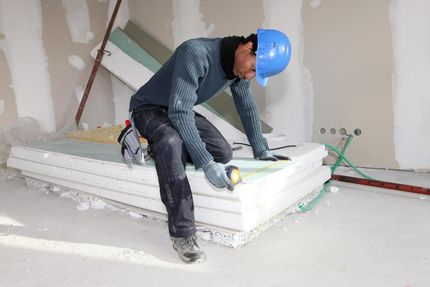Top-Rated Drywall Fort Worth Services for Residential Projects
Top-Rated Drywall Fort Worth Services for Residential Projects
Blog Article
Drywall Installation Facilitated: Tips for Perfect Outcomes
Drywall installation is commonly viewed as a challenging job, yet with the right strategy and understanding, it can become a workable endeavor. Understanding methods for cutting, hanging, and ending up drywall can considerably affect the result.
Picking the Right Materials
Selecting the ideal materials for drywall setup is vital to achieving a sturdy and cosmetically pleasing finish. drywall installation. The key component, drywall sheets, normally can be found in different thicknesses, with 1/2-inch sheets being common for interior wall surfaces. For areas requiring extra wetness resistance, such as shower rooms or cooking areas, think about utilizing eco-friendly board or cement board, which are specifically created to endure moisture

In addition, selecting the appropriate fasteners-- either nails or screws-- is important for safeguarding the drywall to the framework. Drywall screws are usually preferred for their holding power and minimized threat of popping. Think about the finishing touches such as primer and paint, which not just boost the look but likewise shield the drywall from dampness and wear.
Preparing the Setup Location
Prior to beginning the drywall installment procedure, it is important to prepare the setup location completely. This prep work entails numerous essential steps to ensure a smooth and successful project. Initially, clear the location of any kind of furniture, home appliances, or obstructions that could impede access. A tidy office reduces the risk of damages to existing things and enables for effective motion throughout installment.
Next, evaluate the wall surfaces and ceiling for any kind of imperfections, such as cracks, openings, or mold. Address these concerns in advance; spot any damages and allow adequate time for fixings to completely dry. Additionally, make certain that electric outlets, switches, and plumbing are appropriately placed and accounted for, as this will certainly affect drywall positioning.
Think about the environmental conditions too. A secure temperature level and humidity level are important for ideal attachment and efficiency of the drywall materials. Utilize a dehumidifier or heating unit to create suitable problems. if necessary.
Cutting and Hanging Drywall
The trick to effective drywall installment depends on the precise cutting and dangling of the panels. Begin by measuring the area accurately, thinking about any type of obstructions such as electric outlets or windows. Use a straight side and an energy knife to score the drywall along your dimensions, after that snap it along the scored line for a tidy break. For even more intricate cuts, such as around outlets, a drywall saw can be used for precision.

Constantly function from the top down and entrusted to right, guaranteeing that you preserve a staggered pattern to boost stability. Appropriately hanging the drywall sets the foundation for a smooth surface, inevitably bring about exceptional lead to your drywall task.
Taping and Mudding Techniques
While proper cutting and hanging of drywall sets the stage, the following important action involves mastering taping and mudding methods to make sure a smooth surface. Insulation is essential for reinforcing joints and preventing fractures; it entails embedding tape right into the applied joint compound (mud) find out Begin with a high quality fiberglass or paper tape, applying the tape over the joint and pushing it into the damp mud using a taping blade, making sure no air bubbles continue to be.
Once the tape remains in area, apply a thin layer of joint substance over the tape, feathering the sides to produce a smooth shift to the drywall surface. Enable this layer to completely dry completely prior to sanding it gently to eliminate imperfections. Repeat this procedure, applying additional coats of mud as needed-- normally 2 to 3 layers-- while gradually broadening the application area with each layer to achieve a smooth look.
After the final layer dries, sand the surface with a fine-grit sandpaper till smooth. drywall installation. Bear in mind to use a mask throughout fining sand to stay clear of breathing in dust fragments. Understanding these taping and mudding strategies is her latest blog vital for accomplishing a professional-quality coating in your drywall installation
Completing Touches for Perfection
Attaining a flawless drywall installation surpasses mudding and taping; it finishes in the completing touches that boost the overall appearance. These last actions are critical in ensuring a professional-grade finish that enhances the looks of your room.
Begin by sanding the dried out joint substance to create a smooth surface area. drywall repair. After fining sand, wipe down the walls with a moist fabric to get rid of any kind of dust fragments, guaranteeing a tidy surface for painting.
Next, apply a guide specifically created for drywall. more This step is necessary, as it helps secure the joint substance and gives an uniform base for the overcoat. Once the guide dries out, check for any flaws, and retouch as required.
Final Thought
In conclusion, effective drywall installment pivots on the careful option of products, comprehensive preparation of the setup area, and precise implementation of cutting and hanging techniques. Mastery of taping and mudding procedures is crucial for achieving a smooth coating.
Drywall setup is typically regarded as a challenging job, yet with the right approach and knowledge, it can become a workable venture.Picking the ideal materials for drywall installation is important to achieving a long lasting and cosmetically pleasing finish.Before starting the drywall installation process, it is necessary to prepare the installation location completely. Mastering these taping and mudding methods is critical for attaining a professional-quality coating in your drywall installment.
In final thought, successful drywall setup hinges on the mindful selection of materials, detailed prep work of the installation area, and exact implementation of cutting and hanging techniques.
Report this page